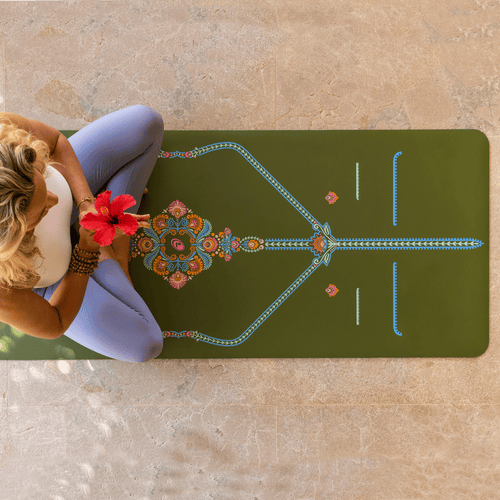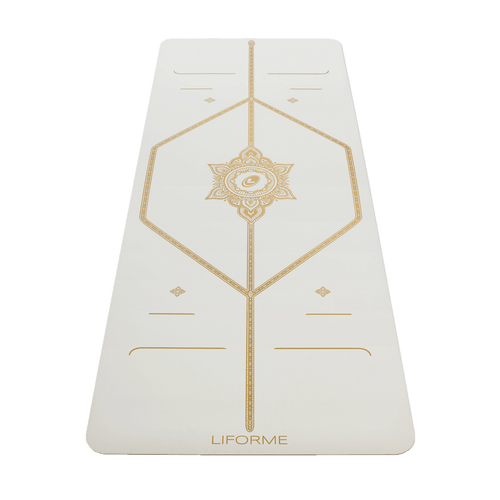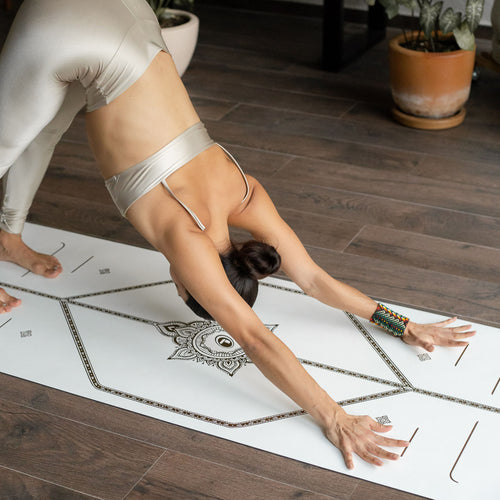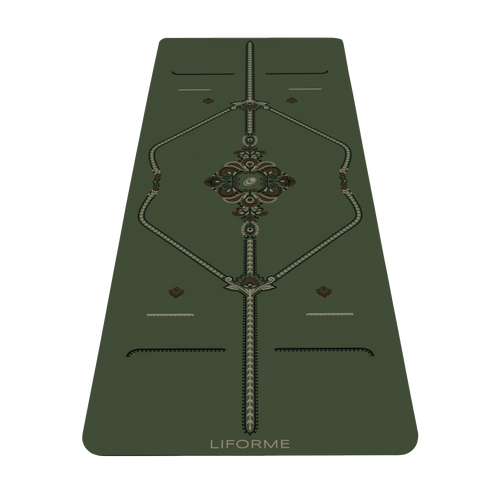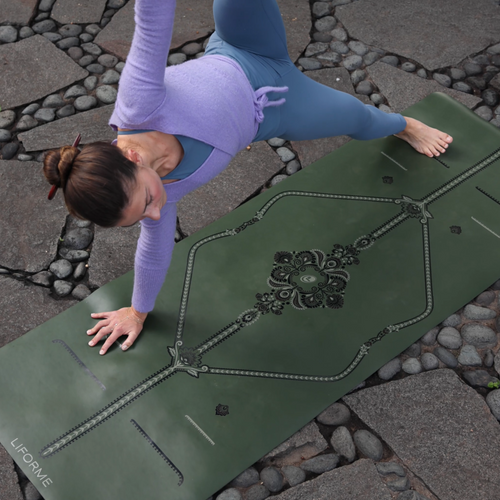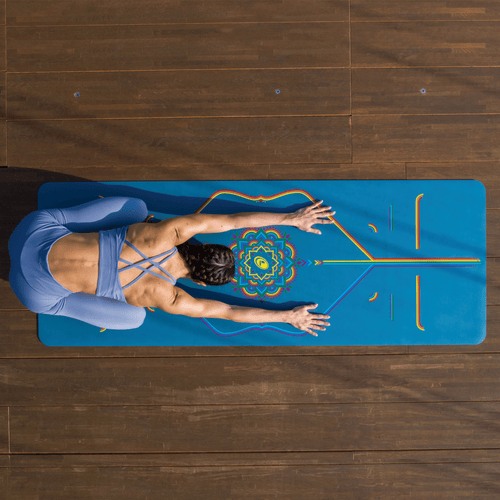Yoga has plenty of forward bends and an ample number of backbends but fewer opportunities to side bend. Gate Pose (also known as Parighasana) offers a chance to open your whole side body, getting into your ribs, armpit, and shoulder while also building balance and core strength. When you get an opportunity to work these areas, take it!
Step-by-Step Instructions for Gate Pose (Parighasana)
- Begin in a kneeling position with your pelvis stacked over your knees. Take extra padding under your knees if you like.
- Take your left leg out to the left side. Flex your left foot to come onto the left heel or point your toes toward the floor.
- Lift your right arm up toward the ceiling and take your left hand onto the outside of your left leg.
- Reach your right arm over your head and to the left to open the right side of your body.
- Let your left arm come further down your left leg as necessary.
- Take your gaze up and under your right arm.
- After several breaths, switch sides.
Yogi’s Tip:
I really came to love Gate Pose during prenatal yoga when I was grateful for any extra space in my ribcage! You don’t have to be pregnant to enjoy the feeling of opening your intercostal muscles, however. Everyone can use a little side stretch.
Gate Pose (Parighasana) Basics
- Sanskrit Name: Parigha (Bar used for shutting a gate) Asana (Pose)
- Yoga Level: Beginner
- Pose Type: Kneeling, Side Bend
- Pose Category: Lateral Stretches, Beginner Yoga Poses
- Common Props: Yoga pad or folded blanket under the knee for comfort and joint support
Benefits of Gate Pose (Parighasana)
- Stretches the intercostal muscles between the ribs
- Opens the side body
- Improves core strength
- Improves balance
- Stretches the back of the extended leg
Key Alignment Cues
1. Keep your hips square
Your hips face forward, just like in Mountain Pose. As you lean into a side bend, there can be a tendency to shift your hips in the opposite direction to compensate. Resist this urge.
2. Activate your extended leg
Flex or point the toes on your extended leg to keep your whole leg engaged.
Gate Pose Beginner Tips
- It’s ok to be a little wobbly. That’s how you get stronger.
- Try not to put a lot of weight into the hand that is resting on your leg. Use your core for support instead.
- Come on the sole of the extended foot with your toes pointing toward the front of your mat for more stability.
Gate Pose Variations

If you’re looking for a different way to explore Gate Pose, this variation offers extra support while still providing a deep side stretch and balance challenge.
- From an upright kneeling position, extend your left leg out to the left side.
- Bring your right hand to your mat in line with your right knee.
- Make sure your right shoulder is stacked over your right wrist.
- Take your left arm straight up to the ceiling or over your left ear.
- Turn your gaze up.
Preparatory Pose

Wide-Legged Standing Forward Bend (Prasarita Padottanasana)
Wide-Legged Standing Forward Bend helps lengthen the hamstrings and stretch the inner thighs, making it easier to move into Gate Pose with more flexibility and stability.
Gate Pose FAQs
Why should I include Gate Pose in my yoga practice?
Gate Pose may seem simple, but it offers a big impact. Its deep side stretch improves flexibility, while the core engagement helps with stability and balance. This pose is beneficial for both beginners and experienced yogis alike. It’s also a great addition to Prenatal Yoga for gentle movement.
How long should I hold Gate Pose on each side?
Hold Parighasana for 5-10 breaths on each side, allowing your body to settle into the stretch. If you’re focusing on deep flexibility, you can stay as long as it feels comfortable, but be sure to practice evenly on both sides to maintain balance.














